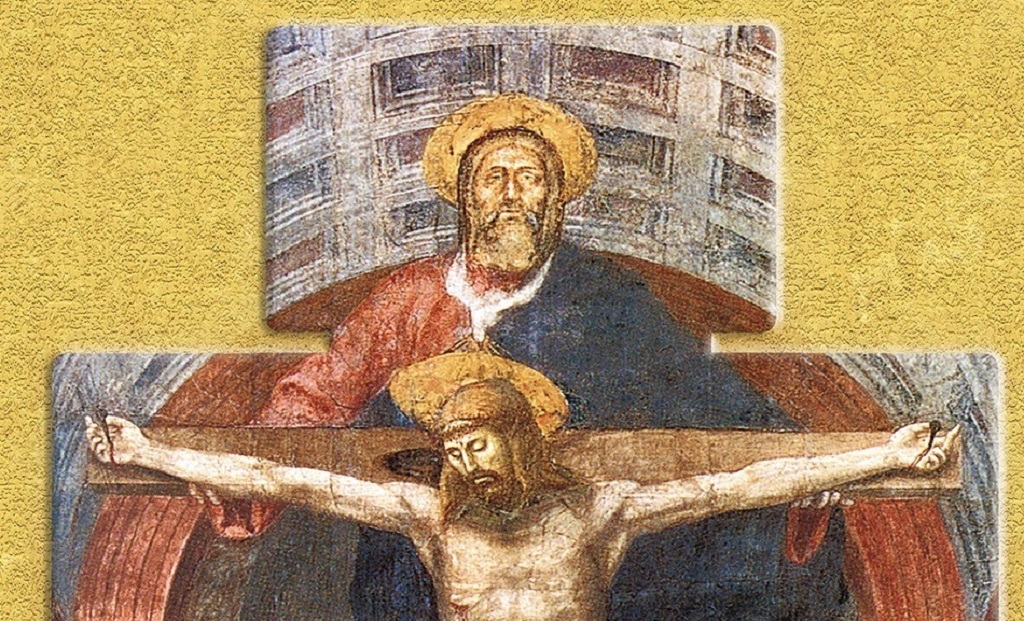Deut 4:32-34, 39-40 Ps 32 Rom 8:14-17 Mt 28:16-20
The language of Father and Son is relational language, and reminds us that, for God, as for us, created in God’s image, relationship and community are primary. God can no more be defined by what God does than we can. God is a Being, not a Doing, just as we are human beings, not human doings. This is a point of theology, but also, with all good theology, a practical point. To define God’s inner life in the Trinity in terms of God’s activity leads to defining humans, created in God’s image, in the same way. Those who choose to say: “In the name of the Creator, the Redeemer and the Sustainer” err in defining God by function and not by person. God is a living being who exists in intimate relationship with us.
Our God isn’t immovable. God isn’t alone. God is communication between the Father, the Son, and the Holy Spirit. This is the profound mystery that the liturgy for the feast of the Holy Trinity recalls: both the unspeakable reality of God and the manner in which this mystery has been given to us. The Trinity celebrates the peace and unity of the divine persons in whom the circular dance of love, perichoresis in Greek, continues. That unity is a dance of life and relationships, encompassing all aspects of human life. We must constantly strive for this unity and peace of God, Jesus, and their life-giving Spirit, a peace that theological controversy never gives. Though theology is absolutely necessary, we would do well to pray more and love God more, than trying to figure out our Trinitarian God! The consolation is this: complete understanding is not necessary for love.
Love can never outgrow its fascination with the puzzling aspects of the one loved. This is our approach to the Trinitarian mystery. We must love God more. On this feast, let us pray that we be caught up in the unifying and reconciling work of the Holy Spirit of God. The increasing glory of God is this progressive revelation of the Trinity. Many times during our lives, we experience this revelation and God’s Trinitarian presence through the depth of love, communication and relationship with other people. Our God is rich in relationships, communication and love for all people. This God models to us what the dynamic Trinitarian life is all about– communication, relationship and affection. The quality of our Christian live is based on imitation of the interior life of the Trinity.
The foundation of our Trinitarian faith is dialogue, communication and a ‘dance of life’. Though we may struggle in understanding the Holy Trinity, we nevertheless take it into our very hands each time that we mark ourselves with the sign of the cross. Words once spoken over us at baptism become the words with which we bless ourselves in the name of the Trinity. Herein lies the meaning of this unique, one God in three Persons.
From – http://saltandlighttv.org/blogfeed/getpost.php?id=4125

